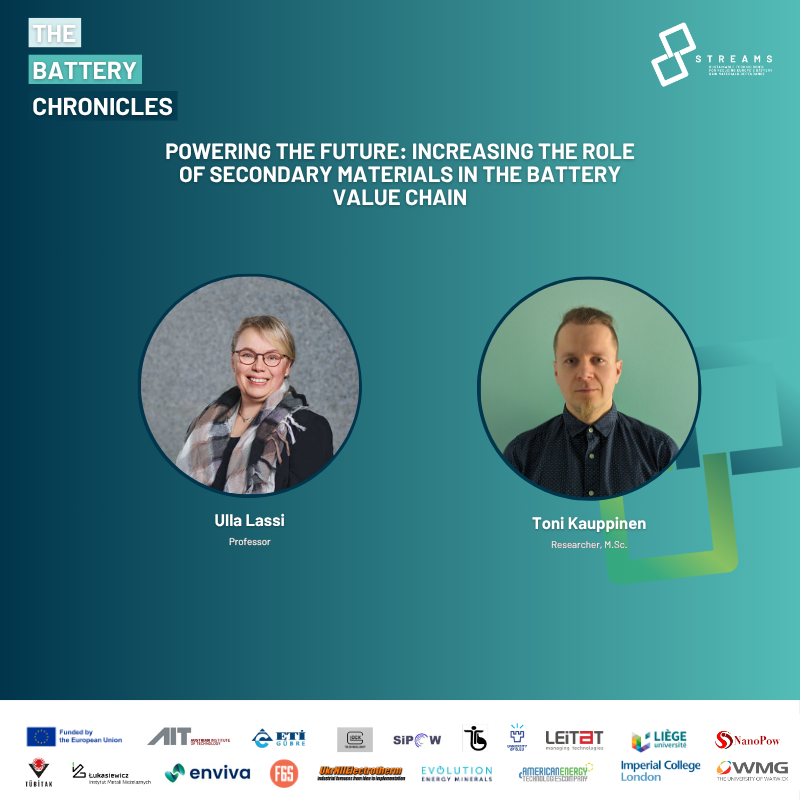The demand for lithium-ion batteries is increasing due to the global transition to electric vehicles and renewable energy storage applications. To meet this demand sustainably, our researchers in STREAMS are developing methods to produce battery materials —especially precursor cathode active materials (pCAM) and cathode active materials (CAM)—from recycled sources. This is done by developing sustainable and industrially relevant methods for the recovery of lithium, nickel, cobalt, and manganese.
The primary aim of STREAMS is to strengthen Europe’s battery materials supply chain and reduce dependency on imported critical raw materials (CRMs) such as lithium and cobalt. To meet the EU Battery Regulation targets for these elements, a combination of technological innovation and circular economy practices is required. By 2031, battery manufacturers must ensure the minimum recycled content in new batteries: 16%, 6%, and 6% for Co, Li, and Ni, respectively. By 2035, these thresholds increase to 20%, 10%, and 12 %, for Co, Li, and Ni, respectively. This is not limited only to the use of spent batteries and related black mass, but we should promote the use of other industrial side streams and other secondary raw materials to diversify input sources and support circular economy principles.
The straightforward way to reach these given thresholds is to develop sustainable production technologies for cathode active materials and precursors. In STREAMS, researchers of University of Oulu use chemical precipitation since it is one of the most potential, being scalable, and enabling the simultaneous use of primary and secondary materials. Recovered Ni, Co, and Mn from spent batteries are used as raw material for NMC precursor synthesis, with a strictly controlled growth of secondary particles. This enables direct utilization without the unnecessary precipitation of mixed metal hydroxides. While cobalt and nickel can be recovered at high rates, lithium recovery is still technologically challenging and often less efficient. In STREAMS, lithium is recovered by leaching from Bayer cake from the aluminum industry or from black mass of spent lithium-ion batteries, and further converted to Li carbonate and/or hydroxide. These lithium salts can be used as lithiation chemicals for NMC precursors. This enables us to achieve the EU’s ambitious targets for recycled content in lithium, cobalt, and nickel by techno-economically feasible way.
You can download the full article here.

